
Contemporary art
Showing 101 to 120 of 134 results for q=contemporary art
-
 Josh Muir is a proud Yorta Yorta/ Gunditjmara man who holds his culture strong and close to his heart; it gives him his voice and his identity. Muir’s artworks echo his culture in a contemporary setting, and his practice reflects his journey. Using bright colours and bold lines, he often draws together historical events and stories and presents them alongside current narratives in a distinctive graphic style.
Josh Muir is a proud Yorta Yorta/ Gunditjmara man who holds his culture strong and close to his heart; it gives him his voice and his identity. Muir’s artworks echo his culture in a contemporary setting, and his practice reflects his journey. Using bright colours and bold lines, he often draws together historical events and stories and presents them alongside current narratives in a distinctive graphic style. -
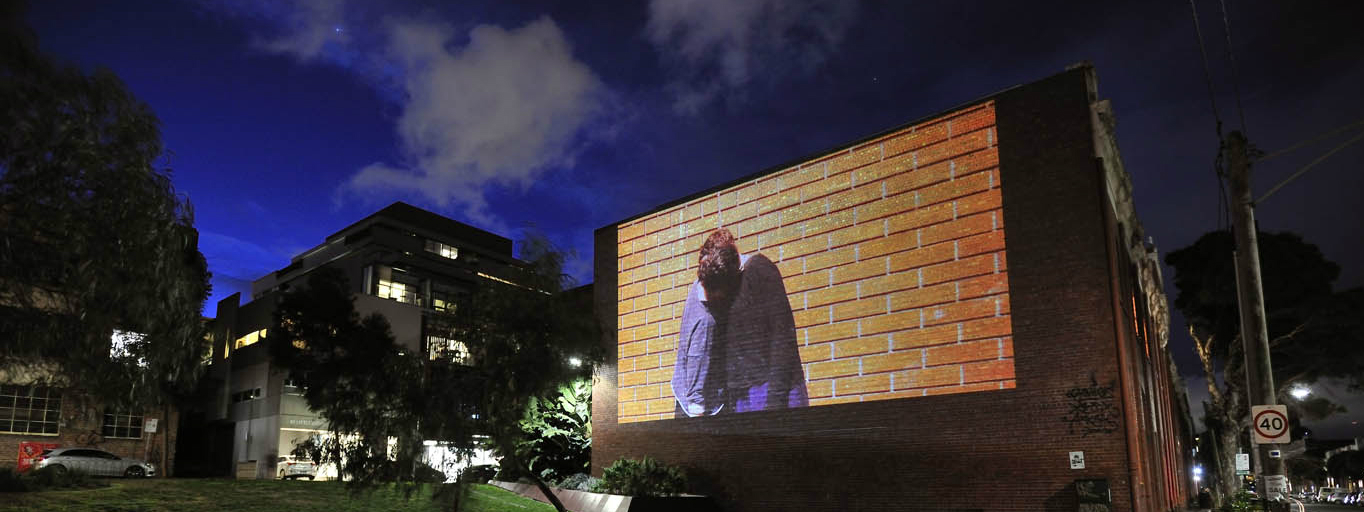
Georgia Robenstone
I’m Trying uses body language to explore the dynamics of relationships between close friends and queer couples, taking cues from a party game with sexual overtones. -
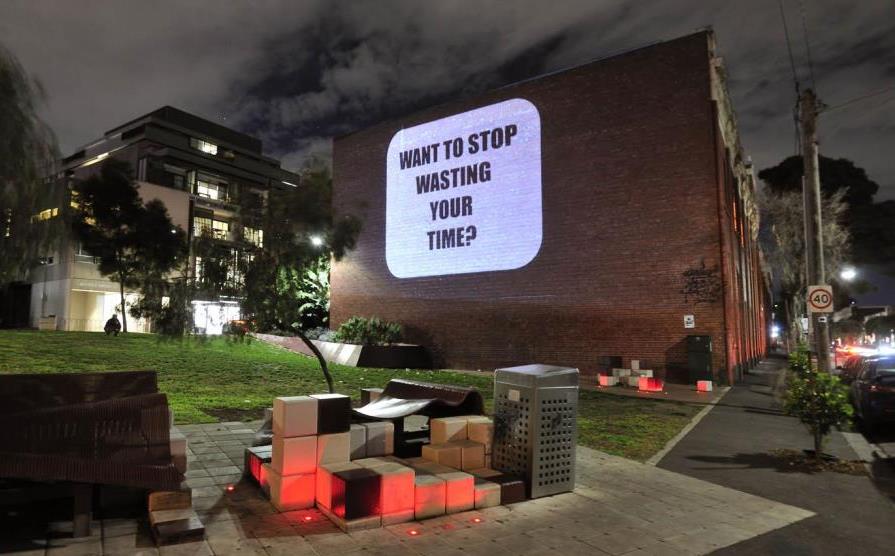
Martine Corompt
Reduction has become a contemporary imperative, a mantra for both our civic and personal well-being. To use less, to want less, to reject the superfluous. Speaking through the doctrines of Modernist abstraction, contemporary lifestyle minimalism and retirement advice, the reductive ethos is subliminally transmitted to the viewer using the flash frame technique – an efficient process developed for training WW2 fighter pilots. Since 1995 Martine has exhibited widely in individual and group exhibitions, locally, nationally and internationally including works such as Torrent exhibited at Contemporary Art Tasmania and Centre for Contemporary Photography, 2015 and Tide exhibited at West Space, 2012. Subjects such as the reductive representation of bodies of water and the natural and unnatural landscape contributed to the theme of her PhD research project titled: Cartoon and the Cult of Reduction completed at the Victorian College of the Arts, University of Melbourne in 2017. Martine is a senior lecturer in the School of Art RMIT in interdisciplinary art practices ranging from drawing, animation and expanded media installation. -
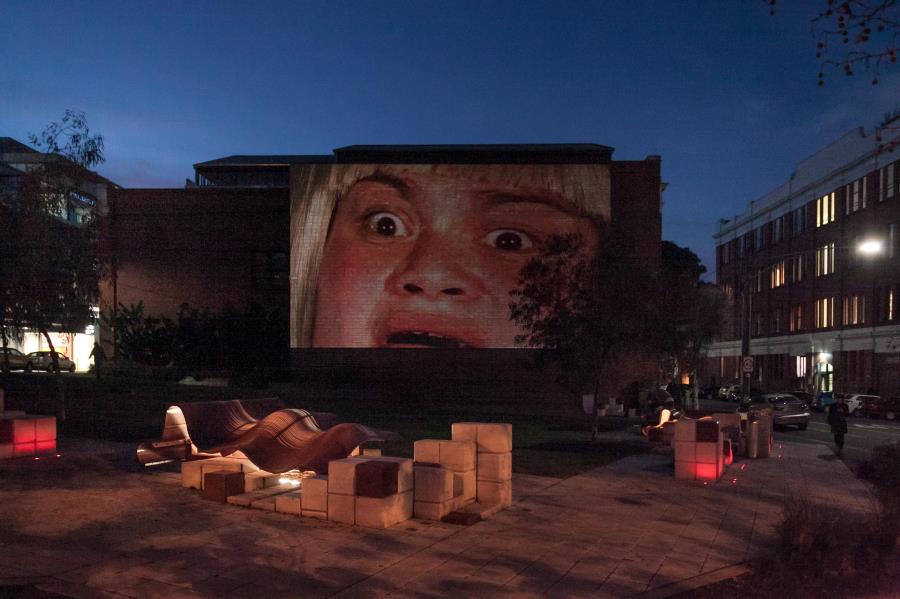
Salote Tawale
In Salote Tawale’s single-channel video work entitled Super, the artist uses her own body to portray all of the main characters within a super hero narrative―the gendered stereotypes of the hero, sidekick, villain and victim. Through this act the inequalities of gender within society are revealed. The artist’s Fijian features play off against expected Anglicised racial stereotypes of the hero and the victim. This discussion is still relevant in our society where the main narrative that exists within popular culture is still dominated by the Anglo/ Celtic body. By using her own body the artist is commenting on the perceived 'normal body' within Australian society. The video plays on in a never ending loop, the story is never resolved and the characters continue to be wrapped up in the same moment. -
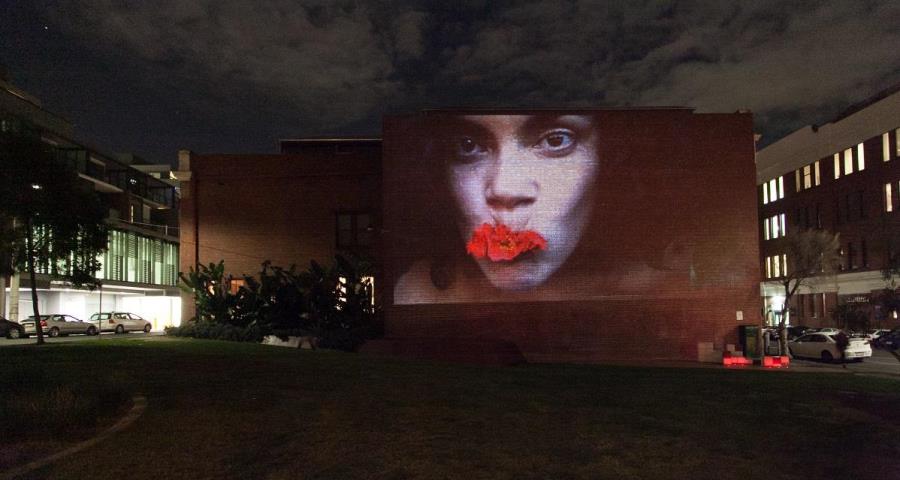
Angela Tiatia
Hibiscus Rosa Sinensis was filmed in Vaimaanga at the site of the Cook Islands' failed Sheraton Resort development. In this work Angela Tiatia creates a sense of suspense as the camera slowly leads us through a garden, where we are confronted with the intimate image of a woman with a flower in her mouth. Visually dramatic, the bright scarlet petals contrast the dark green vegetation as Tiatia slowly eats the hibiscus: a Pacific icon. Her penetrating gaze is both powerful and provocative. Tiatia is interested in the representation of Pacific women and this work was conceived as 'a simple gesture that would cross the language barrier' and represents displeasure over the historic and ongoing objectification and misrepresentation of Pacific women. -
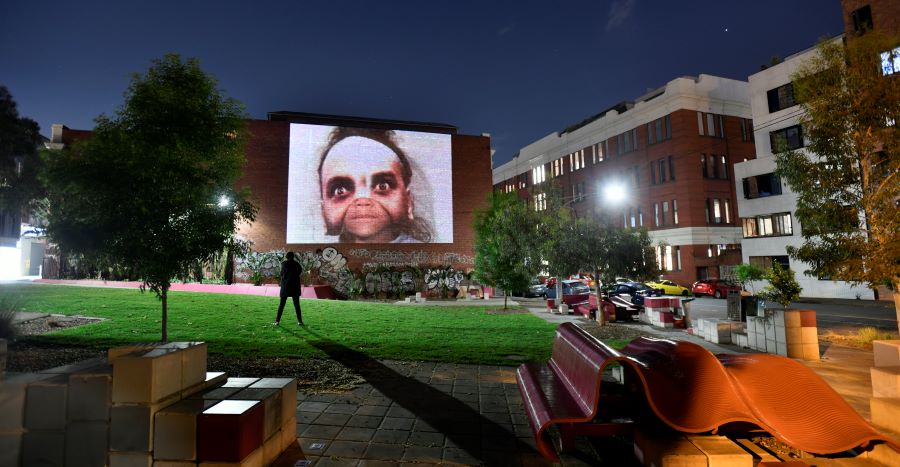
Destiny Deacon and Virginia Fraser
Forced into Images is a video work by Destiny Deacon & Virginia Fraser. The two four-year olds in this video are cousins, Inyaka Saunders and Elia Harding, the children of two of Destiny’s siblings. They were like brother and sister themselves when the video was shot, and the artists minded them often from when they were babies. -
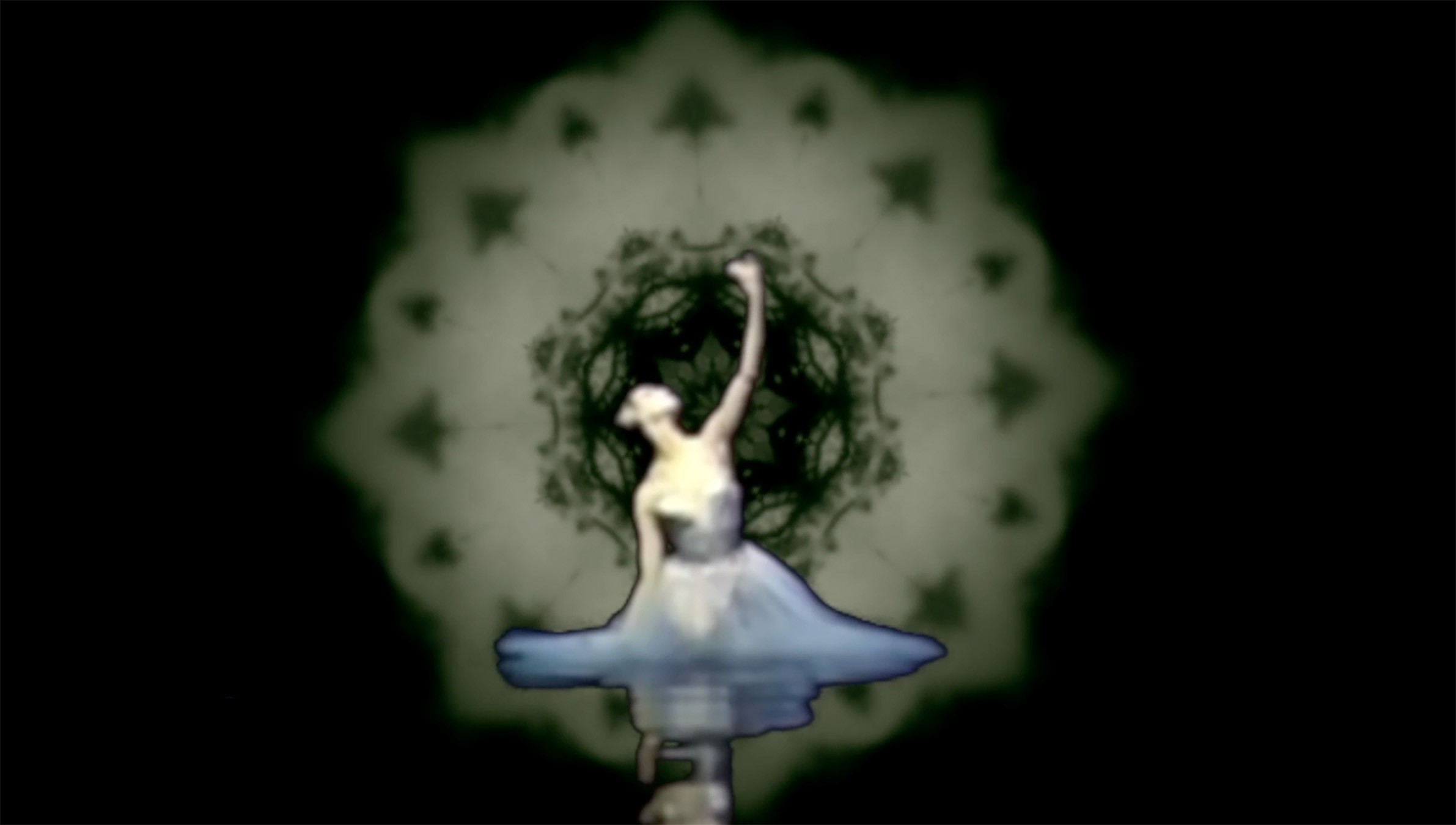
Simon Rose
Textual Analysis I is an exploration into communication through the moving image. It brings into focus how narrative, emotion and symbolism are affected by motion, colour and composition. -
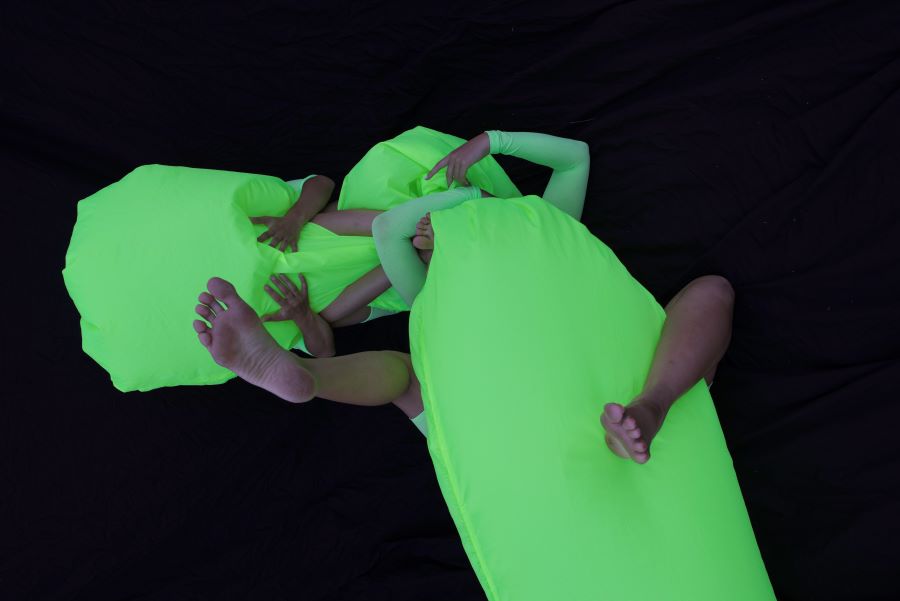
Amrita Hepi, Honey Long & Prue Stent
Omphalus by Amrita Hepi, Honey Long & Prue Stent will be exhibited in Peel Street Park from Friday 29 April to Thursday 12 June, 2022. -
.jpg?h=600&la=en&w=900&hash=B740A14E80A1B84BAB3B0719E894F3277E827125)
Kent Morris
By reconstructing the built environment through a First Peoples lens, Kent Morris reveals the continuing presence and patterns of Aboriginal history, culture and knowledge in the contemporary Australian landscape, despite ongoing colonial interventions in the physical and political environments. -
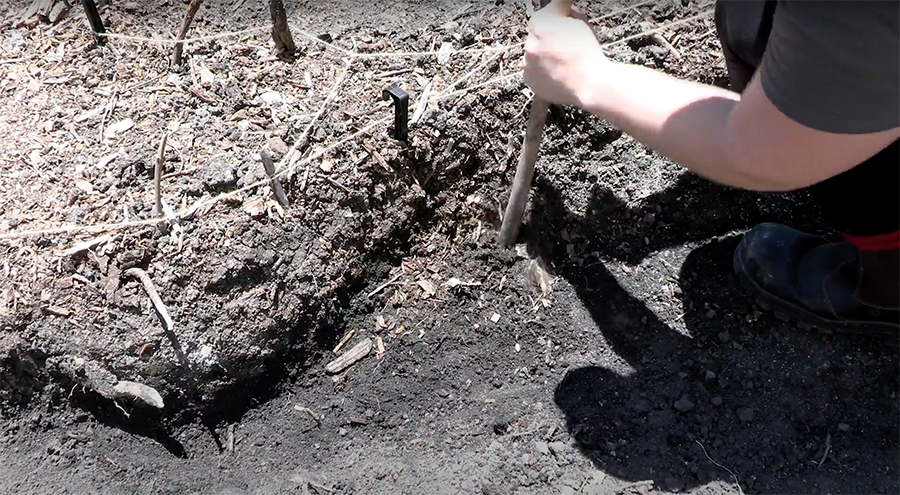
Moorina Bonini and Michael Tuhanuku
RE-POSITIONING by Moorina Bonini is a site-specific work that engages both the unceded Country and site of the Substation. -
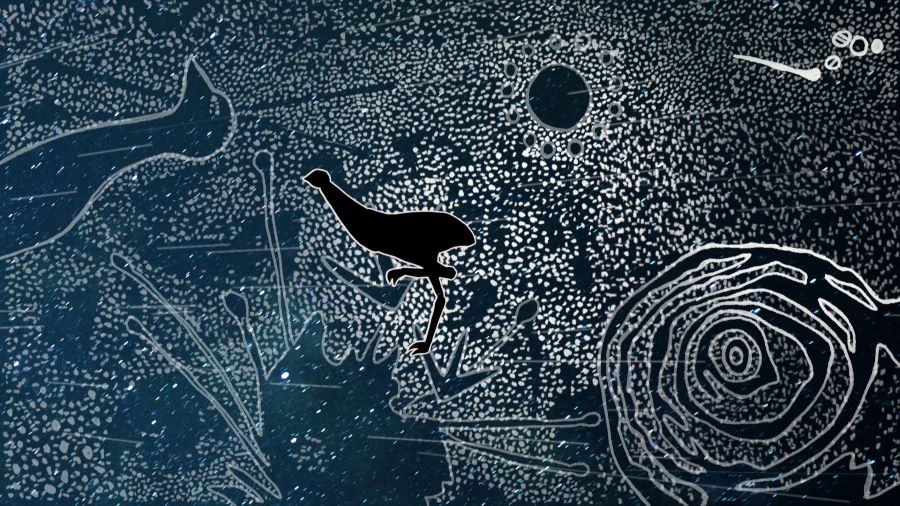
Daen Sansbury-Smith and Isobel Knowles
Adja Country ARt is an artistic exploration through Narungga Country. Following four totems, the artwork has been created to allow viewers the ability to travel and to develop or maintain a connection to Country when sometimes for many reasons they cannot. -

Jahkarli Romanis
This 2022 artwork Cache by Jahkarli Romanis features recurring images of Pitta Pitta and a portrait of the artist's great-grandmother flick across Google Earth’s representation of Country. -
Solid Lines presents: Art Unceded
A selection of works from fourteen First Nations artists across Australia. This collection is a celebration of First Nations identity and the broad diversity that exists in all of the artist’s connections to Country, and the rich history and traditions that define them as contemporary artists today.
-
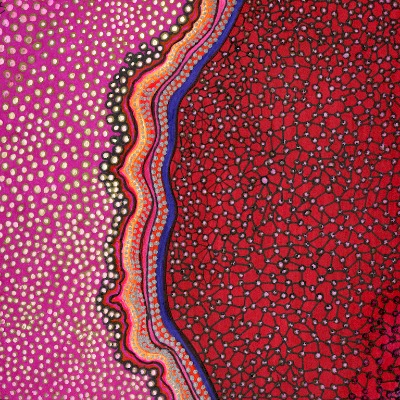
jarrawujarrawuwarra by Ros Sultan
Ros Sultan is an Eastern Arrernte and Gurindji woman who uses ink; texta pens; acrylic paints; and finely ground earth that resembles pigment or ochre to create intricate and highly detailed images.
For this exhibition, entitled jarrawujarrawuwarra, meaning ‘moving light’ in Gurindji language, Sultan’s small, detailed drawings are projected at a momentous scale. The light beams life into the lines, shapes, curves and colours of each delicately arranged composition creating movement as they dance across the park.
-

The Unsung Hero by Kathy Holowko
The earthworm is one of the hardest working and most unrecognised members of our biotic community. It is time to honour this unsung hero. -

Tanderrum (inverted plinth) by Taungurung artist Steven Rhall
First Peoples’ identity, resilience, strength, self-determination, Wurundjeri Country, south-eastern Australian Aboriginal cultural practices, Waa the Crow, Aboriginal, colonial history. -

Zone Red by Yandell Walton
Zone Red confronts the urgent reality of climate change by visually embodying the countdown to a critical moment in our planet’s future. -

Sidesault at the Melba seeking EOIs
The Melba Spiegeltent is seeking expressions of interest from independent artists and small to medium companies who would like to be a part of the second festival of innovative and experimental circus work at The Melba Spiegeltent, Sidesault at the Melba. -
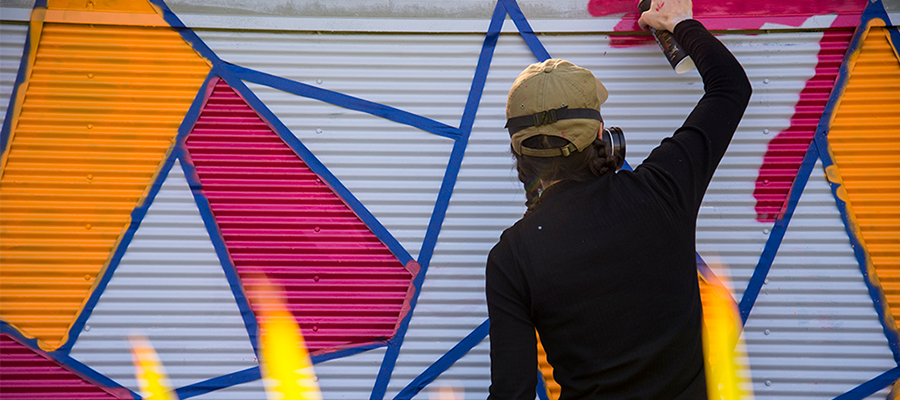
Artist in Residence expressions of interest now open
The Yarra Youth Services Artist in Residence program gives early-career artists aged between 20 and 25 years a free studio space to develop their practice in return for encouraging the next generation of young artists. -
.jpg?h=600&la=en&w=900&hash=79B11A5DBB601869919CB1B6F627E0BB1A489FF6)
2018 Annual Grants Open
Yarra City Council's Annual Grants provide financial and in-kind support for community initiatives and projects running in 2018. Through this program, we will invest over $850,000 in programs which support and enrich the Yarra community.
